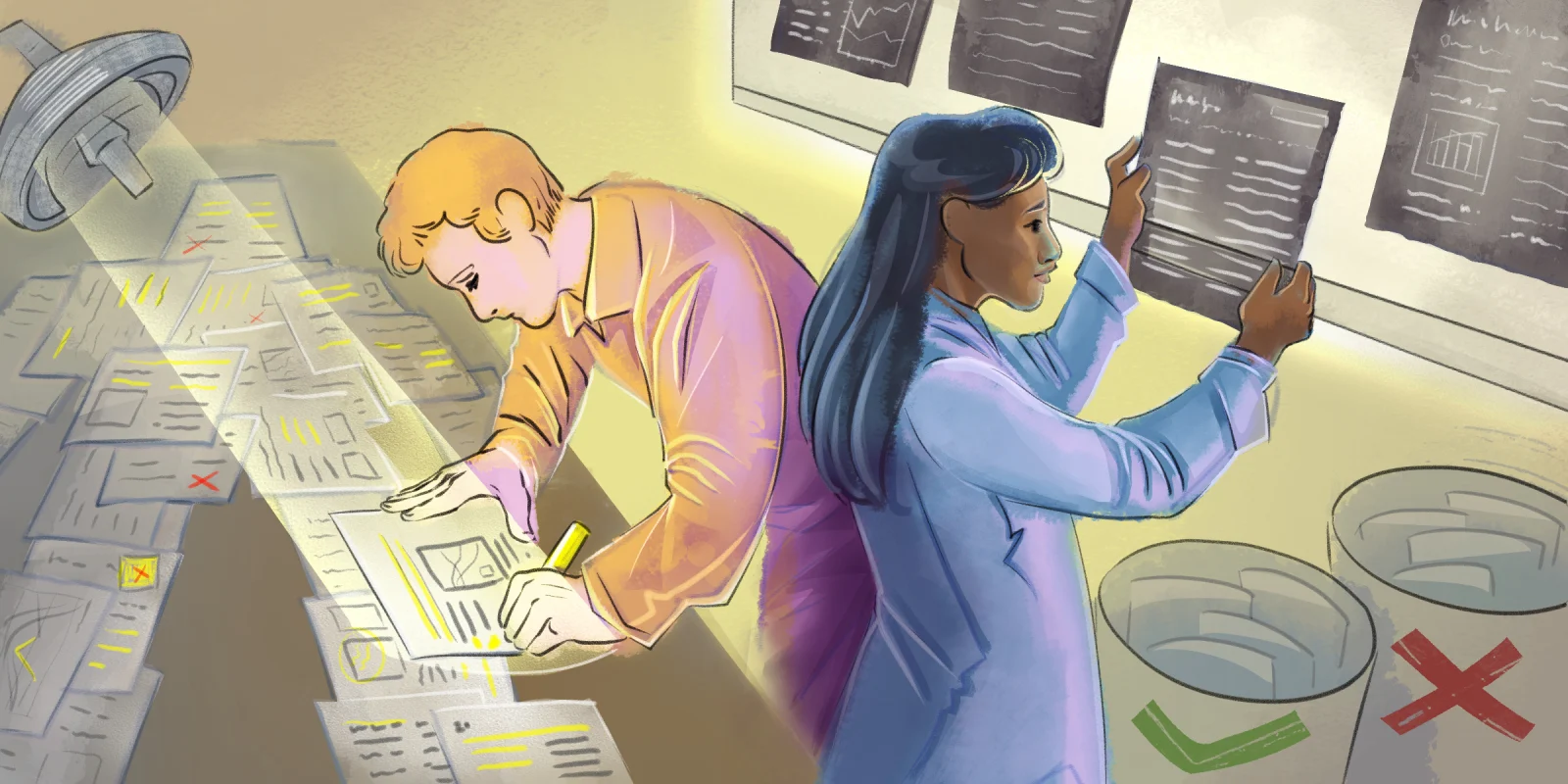Over the past couple of decades, use of the 21-gene recurrence score (RS) assay and other prognostic genomic tests have provided support for omission of adjuvant chemotherapy in certain populations with endocrine sensitive early stage breast cancer. It has become routine to omit chemotherapy for those with smaller, lymph node-negative, estrogen receptor-positive, HER2-negative breast cancers with low RS. Prospective data from the TAILORx study demonstrated no benefit to the addition of adjuvant chemotherapy to endocrine therapy for women with ER-positive, HER2-negative, lymph node-negative breast cancer and a RS of 25 or less (1). In exploratory analyses, a benefit was observed among women who were age 50 or younger with RS in the 16–25 range; an apparent enhanced benefit in older versus younger postmenopausal women led many to conclude that the primary benefit of chemotherapy in this subset was through the induction of menopause. Retrospective analyses of SWOG study S8814 suggested that among postmenopausal women with lymph node-positive, estrogen sensitive early breast cancer, no benefit in disease-free survival is derived from the addition of chemotherapy to endocrine therapy for those with a RS of less than 18 (2).
At the 2020 San Antonio Breast Cancer Symposium, Dr. Kevin Kalinsky reported the results of the SWOG S1007 RxPONDER study which randomized both premenopausal and postmenopausal women with early stage ER-positive, HER2-negative breast cancer involving 1–3 axillary lymph nodes to adjuvant endocrine therapy plus chemotherapy or adjuvant endocrine therapy alone if the 21-gene RS was 25 or less (3). Following an interim analysis of the data, reporting was recommended by the Data Safety and Monitoring Committee. With about five years of follow-up, the investigators found a modest improvement in the primary endpoint of invasive disease-free survival (IDFS) for those randomized to receive chemotherapy in addition to endocrine therapy. An interaction was observed between chemotherapy and menopausal status. With IDFS of 91.9% for postmenopausal women randomized to chemotherapy plus endocrine therapy and 91.6% with endocrine therapy alone, there was no significant benefit to chemotherapy among postmenopausal women. Among premenopausal women, however, there was a 5.2% absolute benefit in IDFS with the addition of chemotherapy to endocrine therapy (five year IDFS of 94.2% versus 89%; HR=0.54, p=0.0004). The findings again spurred speculation as to whether the benefit was purely an effect of ovarian ablation from chemotherapy, particularly since a minority of patients (16% on the endocrine therapy alone arm and 3% on the chemotherapy arm) received ovarian ablation as part of their endocrine treatment.
Based on current data regarding anticipated benefit of adding ovarian ablation to standard endocrine therapy, it is not clear that the endocrine effect of chemotherapy explains the full benefit observed in the premenopausal RxPONDER population. With eight years of follow-up in the Suppression of Ovarian Function (SOFT) trial, there was an approximately 24% reduction in the risk of a disease free survival event with ovarian ablation and the group deriving the greatest benefit to the addition of ovarian ablation was the subset with HER2-positive breast cancer (4). It seems unlikely, therefore, that ovarian suppression by chemotherapy in the RxPONDER study would account for the full 46% reduction in IDFS events in this HER2-negative population. Furthermore, in contrast to what was observed in the TAILORx study, women under age 45 in the RxPONDER trial derived no less benefit from chemotherapy than older postmenopausal women who were more likely to have an ovarian ablation effect with chemotherapy. While an exploratory analysis of the 126 patients treated with OFS identified no statistically significant difference between study arms, it is impossible to draw conclusions from this small subset and a non-significant 27% reduction in IDFS events observed with the addition of chemotherapy among those receiving ovarian ablation certainly suggests the potential for a benefit to chemotherapy independent of the ovarian ablation effect.
Based on the current data, it is likely that for younger patients with lymph node-positive hormone sensitive breast cancer, ovarian ablation effects account for some but not all of the observed benefit to chemotherapy. In my discussions with this patient population regarding risks and benefits of adjuvant chemotherapy, I will suggest that approximately half of the observed benefit can be achieved with other forms of ovarian ablation while the remainder of the benefit may be due to endocrine independent effects of chemotherapy. Risk estimates provided by genomic assays may help inform discussions regarding absolute benefits of various treatments. The results presented by Dr. Kalinsky also suggest that ovarian function suppression may be an underutilized treatment in our premenopausal patients.
Halle C.F. Moore, MD is the Director of Breast Medical Oncology at the Cleveland Clinic Taussig Cancer Institute.
References:
1. Sparano JA, Gray RJ, Makower DF, et al. Adjuvant Chemotherapy guided by a 21-gene expression assay in breast cancer. N Engl J Med. 2018. July 12; 379(2):111-121.
2. Albain KS, Barlow WE, Shak S, et al. Prognostic and predictive value of the 21-gene recurrence score assay in a randomized trial of chemotherapy for postmenopausal, node-positive, estrogen receptor-positive breast cancer. Lancet Oncol. 2010 January; 11(1):55-65.
3. Kalinsky K, Barlow, WE, Meric-Bernstam F, et al. First Results from a phase III randomized clinical trial of standard adjuvant endocrine therapy (ET) +/- chemotherapy (CT) in patients (pts) with 1-3 positive nodes, hormone receptor-positive (HR+) and HER2-negative (HER2-) breast cancer (BC) with recurrence score (RS)<25: SWOG S1007 (RxPonder). SABCS 2020 (GS3-00)
4. Francis PA, Pagani MD, Fleming F et al. Tailoring Adjuvant Endocrine Therapy for Premenopausal Breast Cancer. N Engl J Med 2018 July 12; 379(2):122-137.
Illustration by April Brust







